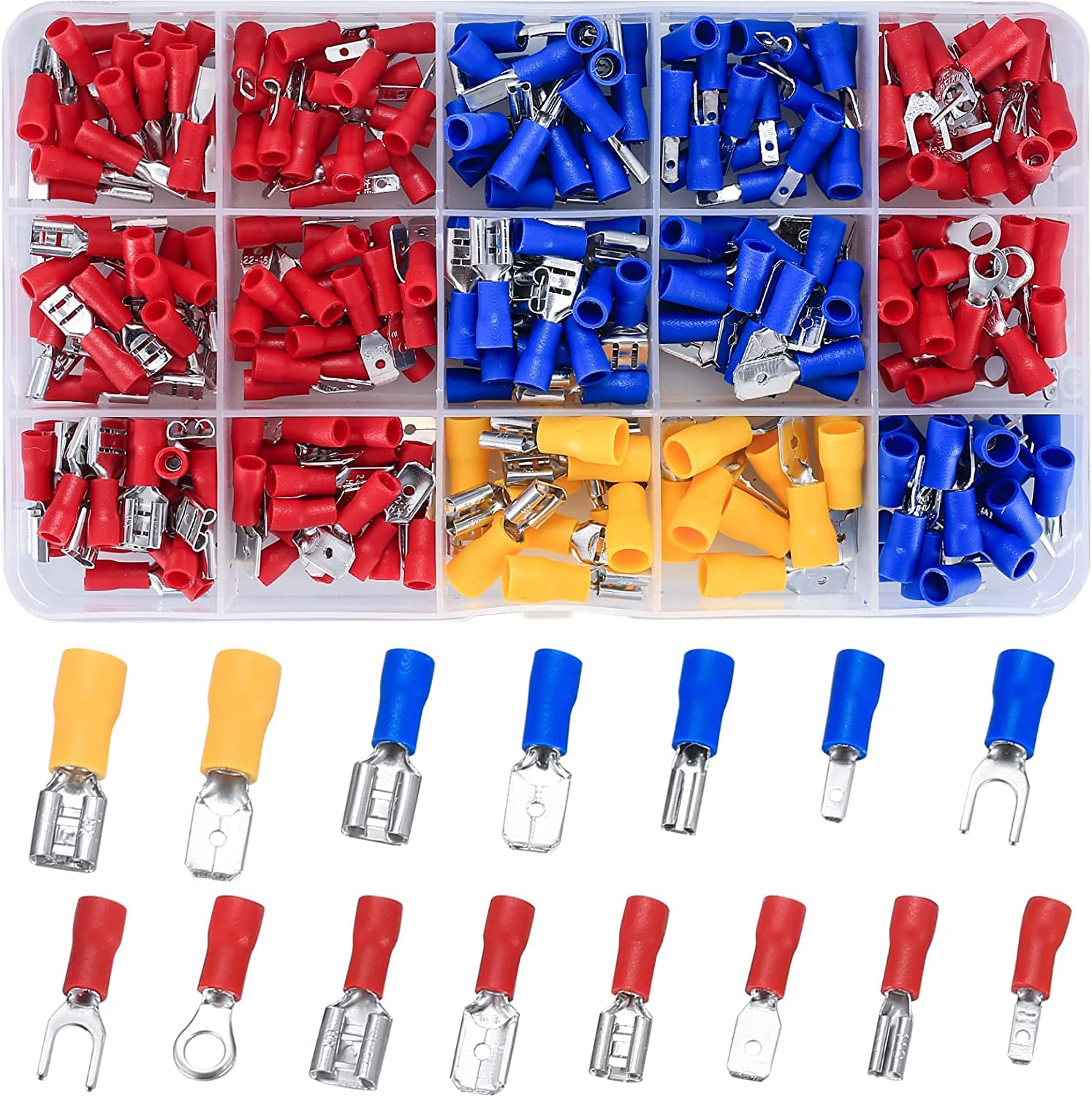Step-by-Step Guide to Butt Splice Wire Connectors

Butt splice wire connectors are essential in electrical connections, offering a seamless method to join two wires for a reliable and durable connection. These connectors, including clip in wire connectors, are indispensable when repairing broken wires or adding new ones to an existing circuit. Selecting the appropriate type and size of butt splice connectors is crucial for safety and efficiency. Utilizing the correct splice connectors for wire ensures that your connections can withstand electrical currents and environmental conditions. Therefore, always consider the specifications and requirements of your project.
Understanding Butt Splice Wire Connectors
What Are Butt Splice Wire Connectors?
Butt splice wire connectors are nifty little devices that help you join two wires together. Imagine them as tiny bridges that connect the ends of wires, creating a seamless path for electricity to flow. These connectors are designed to ensure a secure and reliable connection, which is crucial for maintaining the integrity of your electrical circuits. You simply insert the stripped ends of the wires into the connector, and voilà, they become one continuous wire. This method is not only effective but also quick and easy to install.
Expert Testimony:
Electrical Basics, an expert in electrical connections, states, "A butt splice connector provides the means to connecting end wires to become one seamless, and effective wiring solution. Butt splicers have very high connectivity that sustains the electrical current that passes through it."
Common Applications and Benefits
You might wonder where you would use these connectors. Well, butt splice connectors come in handy in various situations. They're perfect for repairing broken wires or extending existing circuits. If you're working on a project that involves adding new wires to an existing setup, these connectors are your go-to solution. They offer high conductivity and holding strength, ensuring that your connections remain stable over time.
The benefits of using butt splice connectors are numerous. First, they provide a moisture-resistant seal, which protects the wires from environmental factors. This feature is particularly useful in outdoor or damp environments. Second, they come in different sizes and colors, allowing you to choose the right one for your specific wire gauge and application. Lastly, their design makes them user-friendly, so you don't need to be an expert to use them effectively.
Expert Testimony:
Electrical Basics further explains, "They are easy and fast to install, providing a solid connection that can last as long as other methods of electrical connection on most applications."
By understanding what butt splice wire connectors are and how they can be used, you can make informed decisions for your electrical projects. Whether you're a DIY enthusiast or a professional, these connectors offer a reliable solution for your wiring needs.
Selecting the Right Butt Splice Connector
Choosing the right butt splice wire connectors can make a big difference in the success of your electrical projects. You want to ensure that your connections are safe, reliable, and efficient. Let's dive into how you can select the best splice connectors for wire.
Choosing the Correct Size and Color
When it comes to butt splice connectors, size and color matter. Each color typically represents a different wire gauge, so picking the right one ensures a snug fit and optimal conductivity. For instance, red connectors usually fit 22-18 AWG wires, blue ones suit 16-14 AWG, and yellow is for 12-10 AWG. Always check the specifications of your wires before making a choice.
Tip: Keep a variety of sizes and colors in your toolkit. This way, you're always prepared for any wiring task that comes your way.
Types of Butt Splice Connectors: Insulated vs. Non-Insulated
You have two main types of butt splice connectors to consider: insulated and non-insulated. Insulated connectors come with a protective covering that guards against moisture and environmental damage. They're perfect for outdoor or damp conditions. Non-insulated connectors, on the other hand, are more suited for indoor use where exposure to elements isn't a concern.
Insulated Connectors: These provide an extra layer of safety. They prevent accidental short circuits and protect against corrosion. If you're working in environments prone to moisture, insulated connectors are your best bet.
Non-Insulated Connectors: These are often used in controlled environments. They offer a cost-effective solution when insulation isn't necessary. However, you must ensure that the connections are well-secured to avoid any potential hazards.
Pro Tip: Consider using heat shrink butt splices for added protection. They combine the benefits of both insulation and a tight seal, ensuring durability and reliability.
By understanding the differences between these types and choosing the correct size and color, you can ensure that your butt splice connectors meet the demands of your project. Whether you're a seasoned electrician or a DIY enthusiast, selecting the right connector is crucial for achieving a seamless and effective electrical connection.
Step-by-Step Guide to Using Butt Splice Connectors
Getting hands-on with butt splice wire connectors can seem daunting at first, but with the right tools and steps, you can achieve a secure and reliable connection. Let's walk through the process together.
Tools Required for Installation
Before you start, gather the necessary tools. Having everything ready will make the process smoother and more efficient. Here's what you'll need:
Wire Strippers: Essential for removing the insulation from the ends of the wires.
Crimping Tool: Used to compress the butt splice connectors onto the wires, ensuring a tight fit.
Heat Gun or Lighter: If you're using heat shrink butt splice connectors, you'll need this to shrink the insulation around the connection.
Multimeter: Handy for testing the connection once completed to ensure it's working correctly.
Preparing and Stripping the Wires
Preparation is key to a successful connection. Follow these steps to get your wires ready:
Cut the Wire: Use wire cutters to trim the wire to the desired length. Ensure the ends are clean and free of any frayed strands.
Strip the Insulation: With your wire strippers, remove about 1/4 inch of insulation from each end of the wire. Be careful not to nick the wire itself, as this can weaken the connection.
Twist the Strands: If you're working with stranded wire, twist the strands together to make them easier to insert into the connector.
Connecting and Securing the Wires
Now that your wires are prepped, it's time to connect them using the butt splice connectors:
Insert the Wires: Slide one stripped end of the wire into one side of the butt splice connector. Ensure it reaches the metal stop inside the connector.
Crimp the Connector: Use your crimping tool to compress the connector around the wire. Apply firm pressure to ensure a secure grip. Repeat this step for the other wire on the opposite side of the connector.
Seal the Connection: If you're using heat shrink connectors, apply heat with a heat gun or lighter. This will shrink the insulation around the connection, providing additional protection against moisture and environmental factors.
Test the Connection: Use a multimeter to check the continuity of the connection. This ensures that electricity can flow freely through the splice.
By following these steps, you can confidently use butt splice connectors to create strong and durable electrical connections. Whether you're repairing a broken wire or extending a circuit, these connectors offer a reliable solution for your wiring needs.
Proper installation of butt splice wire connectors is crucial for ensuring safety and reliability in your electrical projects. By following the steps outlined, you can create secure connections that withstand various conditions. However, if you encounter challenges or feel uncertain, don't hesitate to seek professional help. Electricians have the expertise to handle complex wiring tasks and ensure everything is up to code. Remember, a well-installed wire connection not only enhances performance but also prevents potential hazards. Always prioritize safety and quality in your wiring endeavors.
See Also
Choosing The Right Wire Connector For Your Needs
In-Depth Guide To Various Cable And Connector Types
A Complete Guide To Selecting Crimper Accessories
